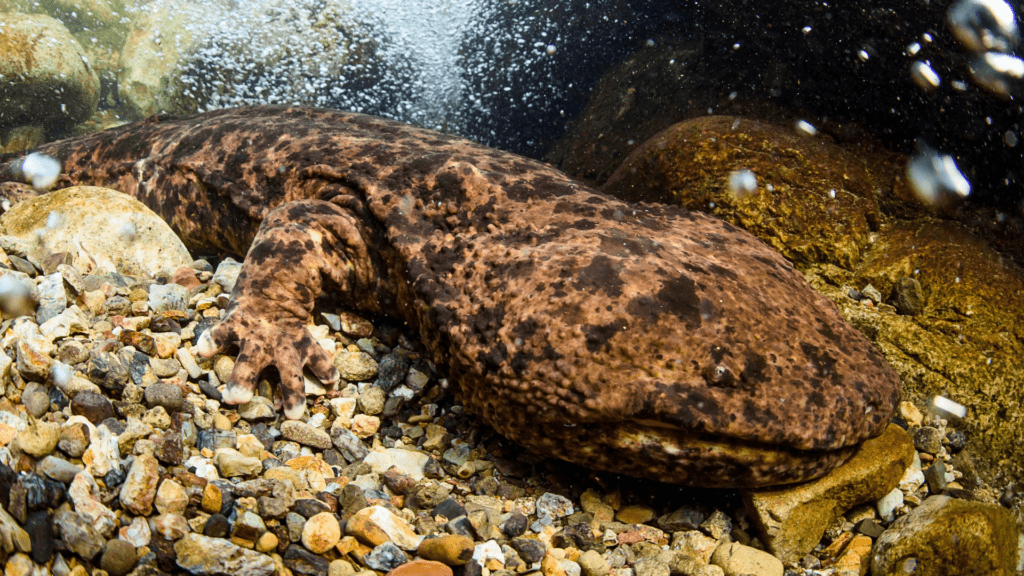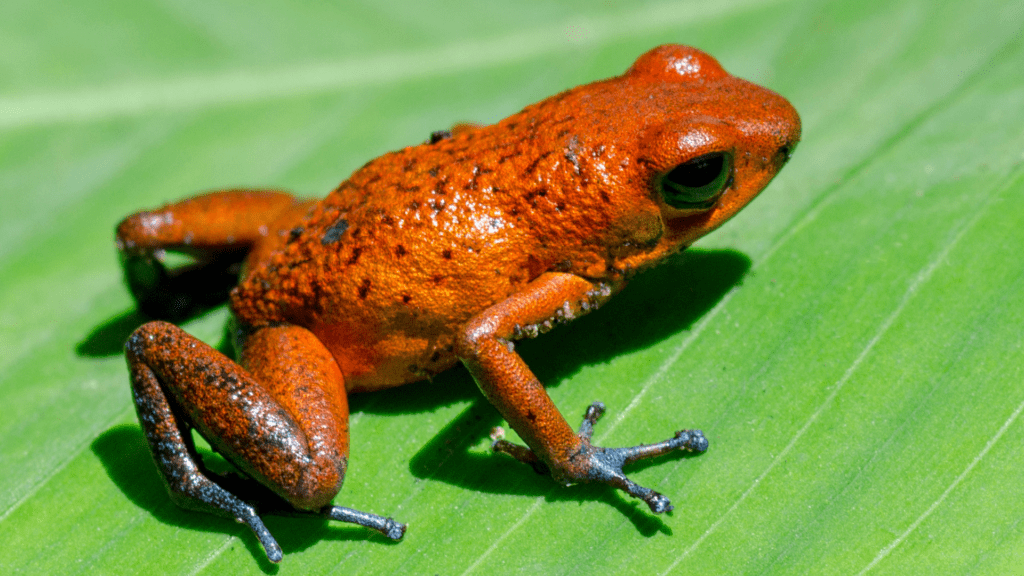Blue Spotted Salamander (Ambystoma laterale) is a unique and visually striking member of the salamander family. Recognized for its vibrant blue-spotted pattern, this amphibian is well-adapted to its environment and can coexist with human habitation. In this article, we explore the characteristics, behavior, habitat, and conservation status of this remarkable species.
Scientific Classification
- Kingdom: Animalia
- Phylum: Chordata
- Class: Amphibia
- Order: Caudata
- Family: Ambystomatidae
- Genus: Ambystoma
- Scientific Name: Ambystoma laterale
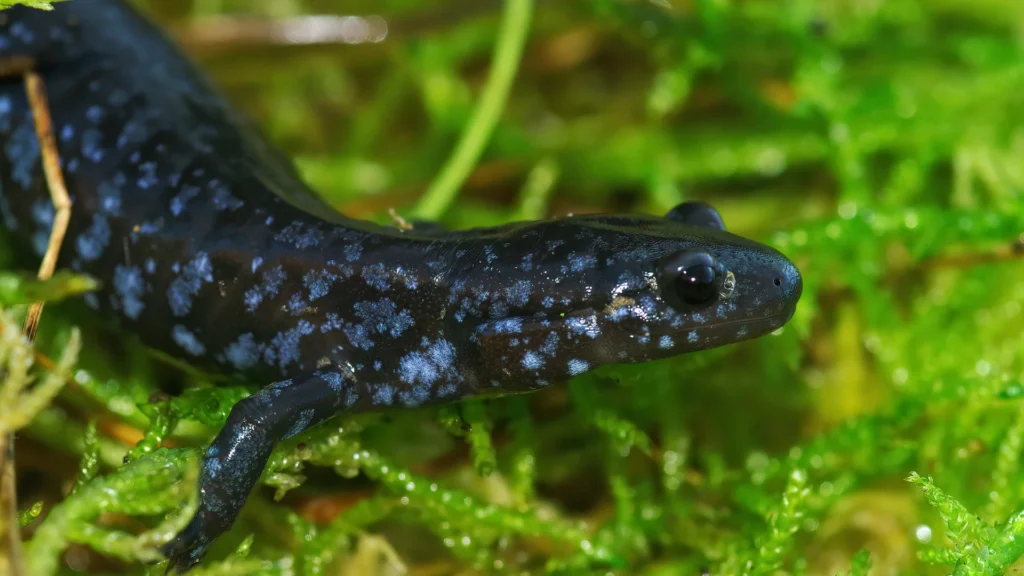
Physical Description
Size and Shape
- Blue Spotted Salamanders range from 8 cm to 14 cm in length.
- Their tail constitutes approximately 40% of their total body length.
- Males tend to have longer and more flattened tails compared to females.
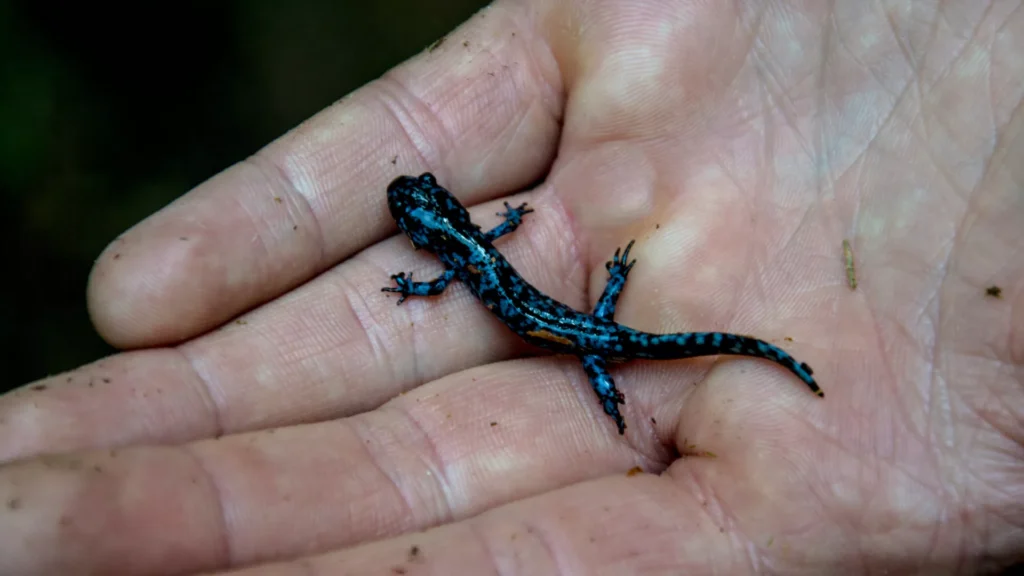
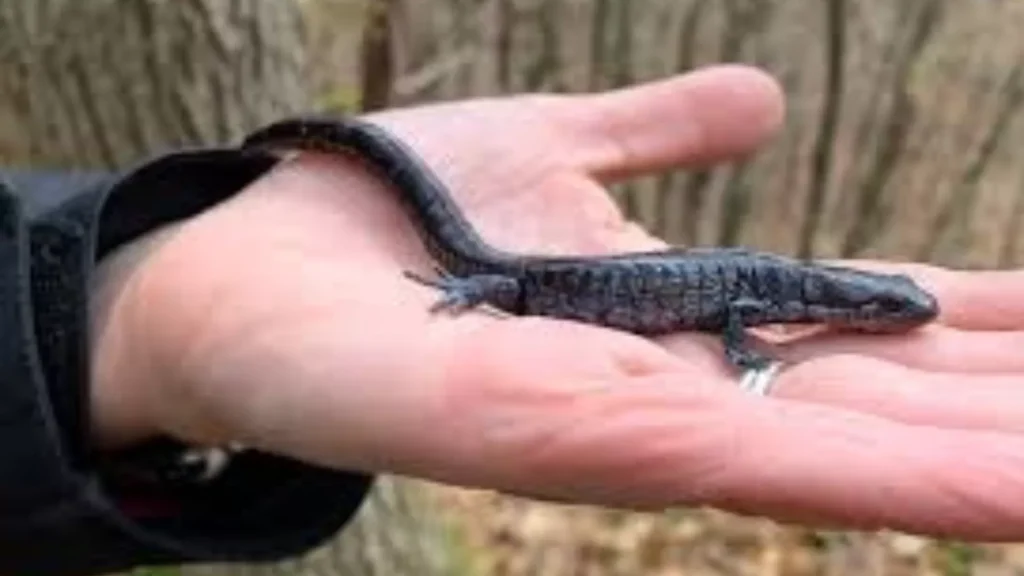
Color and Markings
- As their name suggests, these salamanders have a dark bluish-black body adorned with bluish-white spots along the sides and tail.
- The underside is a pale shade, providing subtle contrast.
Limbs and Toes
- They possess four limbs, each with elongated toes.
- The front limbs have four toes, while the hind limbs have five toes.
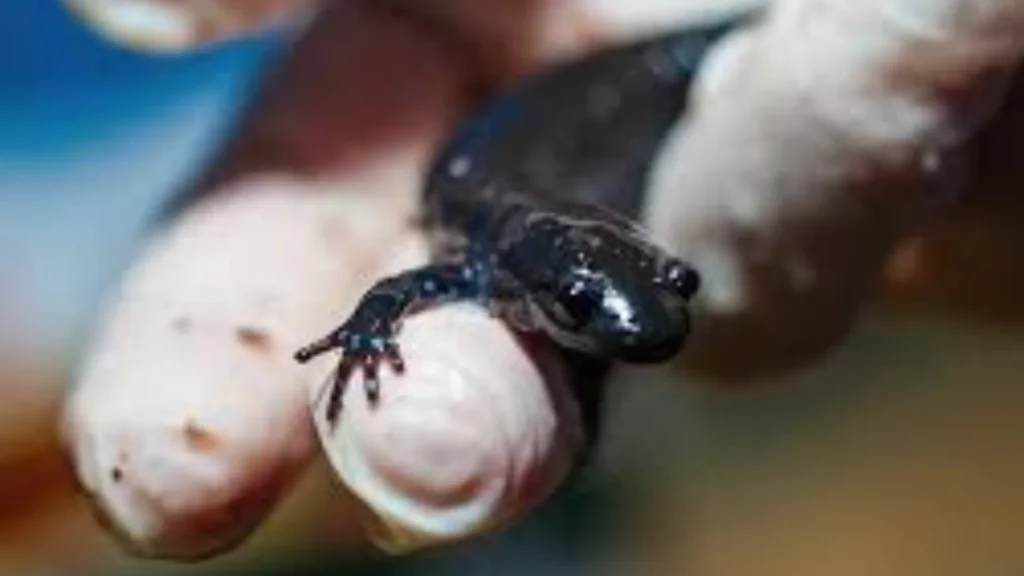
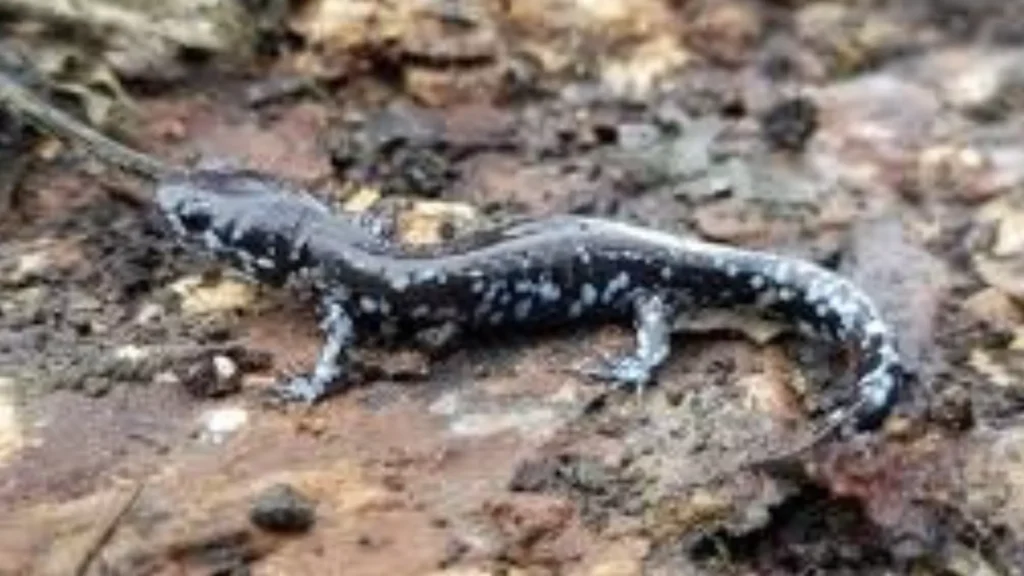
Habitat and Distribution
Natural Range
- Blue Spotted Amphibian is primarily found in Canada and the United States.
- They are prevalent in the Great Lakes region in Canada and extend into parts of Indiana, New England, northern New Jersey, and northeastern Iowa in the United States.
Preferred Habitats
- They thrive in moist, swampy woodlands, deciduous forests, coniferous forests, and open fields.
- During the breeding season, they prefer temporary pools that retain water until late summer.
- They seek shelter under logs, rocks, leaf litter, and dense underbrush throughout the year.
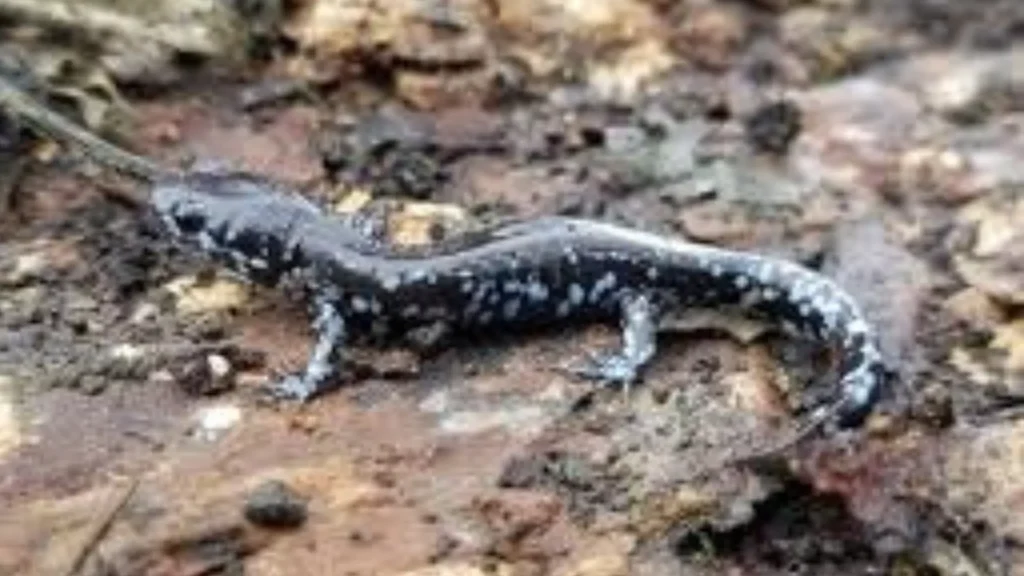

Diet and Feeding Habits
- Blue Spotted Salamanders primarily feed on:
- Earthworms
- Snails
- Spiders
- Slugs
- Centipedes
- Various small insects and invertebrates
Behavior and Adaptations
- Blue Spotted Salamander creatures are nocturnal and prefer damp, rainy conditions.
- They are secretive and unsocial, avoiding interactions with other species.
- When threatened, they secrete a toxic substance from their tails to deter predators.
- If a predator persists, they can detach their tail, which regenerates over time.
Predators
- Common natural predators include:
- Birds
- Raccoons
- Dogs
- Snakes
- Large fish and aquatic predators
- Reproduction and Life Cycle
Mating Season
- Mating occurs primarily in early spring.
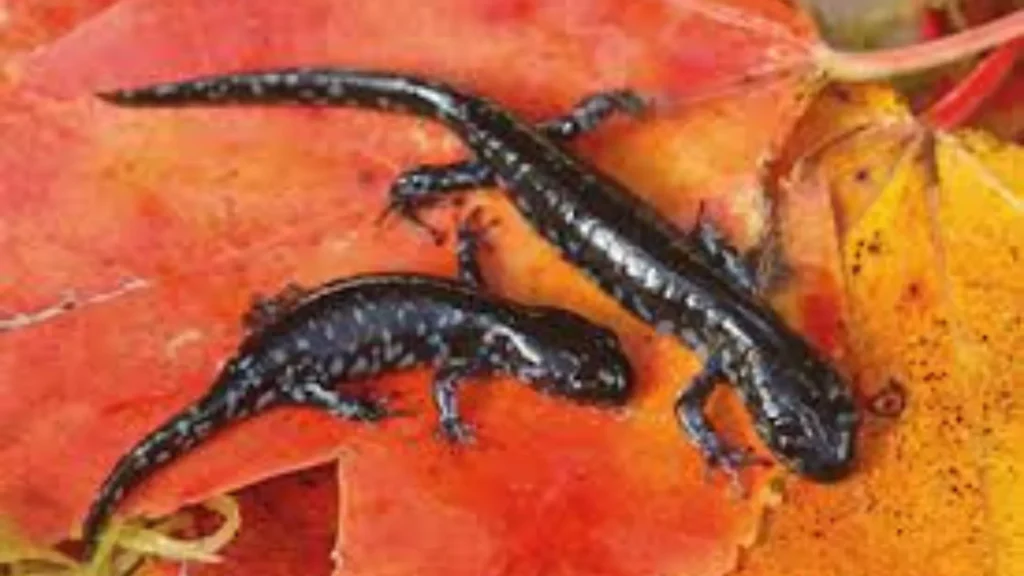
Reproductive Process
- Male salamanders initiate courtship by rubbing their chin on the female’s head while holding her with their front limbs.
- Males deposit germ cells on the pond floor.
- The female picks up these cells, which fertilize her eggs internally.
- Eggs are attached to rocks or aquatic plants to remain hidden from predators.
- A single female lays around 490 eggs annually.
Development Stages
- Eggs hatch within one month.
- Larvae emerge with functional mouths and open eyes.
- Front limbs develop after two weeks, followed by hind limbs in the third week.
- Full metamorphosis into the adult salamander stage occurs by late summer.
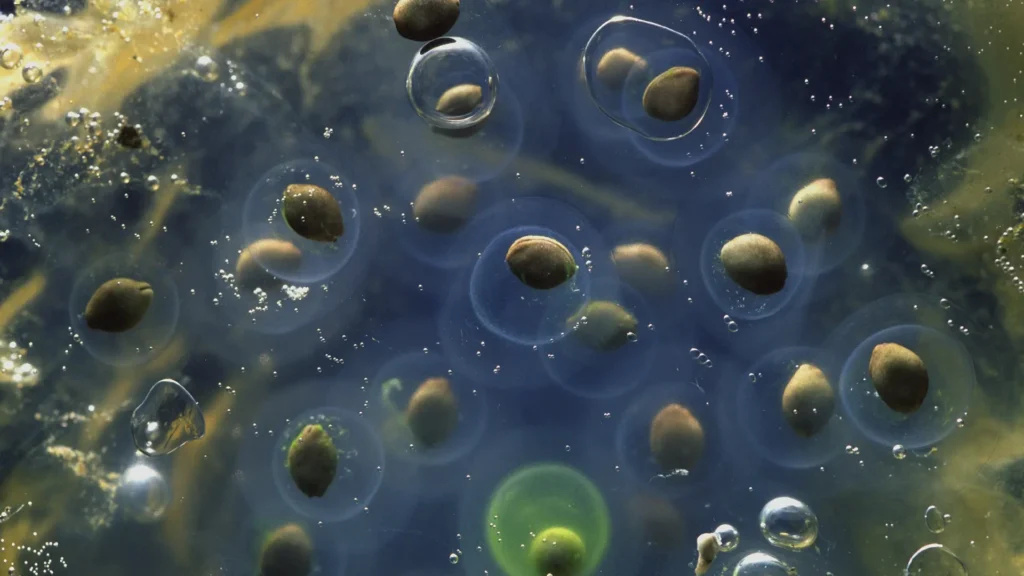
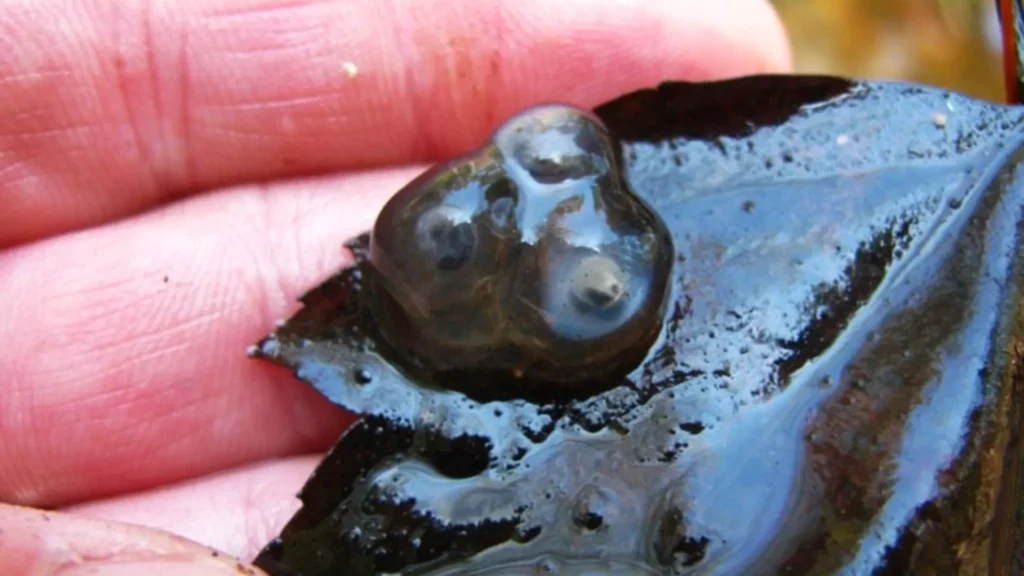
Blue-Spotted Salamanders: Lifespan
Blue-Spotted Salamanders are known for their impressive longevity, making them one of the longer-lived amphibians in their habitat. Their lifespan varies significantly between wild and captive environments, showcasing their adaptability and resilience.
Lifespan in the Wild
In their natural habitats, these salamanders typically live for 12 years or more. Their survival in the wild depends on factors such as predation, habitat quality, and environmental conditions. They thrive in moist, forested areas with access to temporary ponds for breeding, which helps them avoid many predators and harsh conditions.
Lifespan in Captivity
Under controlled conditions, Blue Spotted Salamanders can experience a significant increase in lifespan. In captivity, they have been recorded living up to 32 years, a remarkable extension compared to their typical lifespan in the wild. This increase is largely due to consistent access to food, protection from natural predators, and a controlled, optimal environment. These factors prevent the stresses and dangers that wild salamanders face, such as fluctuating temperatures, limited food availability, and predation risks.
The controlled environment also allows for careful monitoring of their health and well-being. Captive Blue Spotted Salamanders are typically provided with a diet that is both nutritionally balanced and varied, which contributes to their extended lifespan. Additionally, being sheltered from the harsh conditions of the wild—like droughts or extreme weather patterns—ensures that their overall survival and development are maximized.
Interestingly, the long lifespan observed in captivity highlights the importance of environmental stability for amphibians. When provided with the ideal conditions, Blue Spotted Salamanders not only survive but thrive, showing how vital proper care and habitat management are in extending the life of such species.
Conservation Status
The IUCN Red List classifies this species as ‘Least Concern’. This means that, unlike many other salamander species, the Blue Spotted Salamander currently has stable populations across its natural range. However, while they do not face immediate threats, localized declines have been observed due to habitat fragmentation, pollution, and climate change.
One of the key factors contributing to their resilience is their adaptability. Blue Spotted Salamanders can survive in various habitats, including forests, wetlands, and even human-altered landscapes. Their ability to use temporary pools for breeding also gives them an advantage over species that require permanent water bodies.
Despite their current stable status, conservationists emphasize the importance of preserving wetland ecosystems, as these are crucial for their reproductive cycle. Deforestation, urbanization, and road construction near breeding sites can disrupt migration patterns and reduce suitable breeding areas. Additionally, pollution from agricultural runoff and chemicals can negatively impact their aquatic larvae, affecting survival rates.
Conservation efforts focus on habitat preservation, creating buffer zones around wetlands, and raising public awareness about the importance of amphibians in ecosystems. Monitoring population trends and minimizing human-induced threats will be crucial in ensuring that this species remains out of danger in the future.
Interesting Facts
- Males are smaller than females: In the Blue Spotted Salamander species, males typically grow to be smaller than females. This sexual dimorphism is common among amphibians, and in this species, it plays a role in the mating process. Males often display more vibrant colors and unique markings during the breeding season to attract females.
- They are highly adaptable to human presence: One remarkable feature of Blue Spotted Salamanders is their ability to adapt to environments that have been altered by humans. They can thrive in suburban and urban areas, especially when there is enough wetland habitat or wooded areas nearby. However, they still rely heavily on the availability of water sources for breeding and survival.
- They begin mating as early as two years of age: Unlike many other amphibians that may take several years to reach sexual maturity, Blue Spotted Salamanders can begin mating as early as two years of age. This early onset of reproduction helps ensure their population remains stable, allowing them to reproduce in suitable conditions before they reach full maturity.
- Their tail-severing defense mechanism is a key survival adaptation: A fascinating defense mechanism of Blue Spotted Salamanders is their ability to sever their tails when threatened. This tail-severing action distracts predators, allowing the salamander to escape. Over time, the salamander can regenerate its tail, making this a highly effective survival strategy.
- Unlike many salamanders, they are not facing significant habitat loss: While many amphibian species are struggling due to habitat destruction, Blue Spotted Salamanders are relatively resilient. Their populations are not facing significant habitat loss compared to other salamanders, mainly because they are highly adaptable to various types of habitats, including wooded areas, wetlands, and even environments altered by human activity. However, like all amphibians, they still rely on the preservation of wetland habitats for breeding.
Conclusion
Blue Spotted Salamander is a fascinating species with remarkable adaptations that allow it to thrive in various environments. With its striking blue spots, secretive nature, and unique survival mechanisms, it continues to intrigue both researchers and wildlife enthusiasts. Despite its adaptability, conservation efforts remain essential to maintaining its natural habitat and ensuring a stable population for future generations.
1. What is the Blue Spotted Salamander, and where is it found?
blue-spotted species (Ambystoma laterale) is a species of amphibian native to northeastern North America, including parts of the United States and Canada. It is recognized for its distinctive blue spots on its black or gray body.
2. What are the physical characteristics of the Blue Spotted Salamander?
Blue Spotted Salamander has a long, slender body with smooth skin. Its coloration is typically black or dark gray, with bright blue spots scattered across its back and limbs, which are a defining feature of the species.
3. What type of habitat does the Blue Spotted Salamander prefer?
Blue Spotted Salamander prefers moist, forested areas with soft soil and abundant vegetation. They are commonly found near small lakes, ponds, and streams where they can maintain high humidity levels.
4. What does the Blue Spotted Salamander eat?
blue-spotted species is carnivorous, feeding on insects such as worms, spiders, flying insects, and larvae. They require protein-rich food sources for growth and body repair.
5. What is the life cycle of the Blue Spotted Salamander?
Blue Spotted Salamander has a biphasic life cycle. Its eggs are laid in water, where larvae hatch and spend several months developing. Afterward, they undergo metamorphosis and transition to a terrestrial lifestyle as adults.
6. How does the Blue Spotted Salamander cope with environmental changes?
Blue Spotted Salamander cannot withstand extended periods of dryness and relies on moisture to survive. During dry or hot seasons, it seeks out moist microhabitats to avoid desiccation.
7. What threats face the Blue Spotted Salamander?
Major threats to the Blue Spotted Salamander include habitat destruction, pollution, climate change, and predation by non-native species. Competition with invasive species also poses a serious risk to their populations.
8. What role does the Blue Spotted Salamander play in its ecosystem?
Blue Spotted Salamander plays an important ecological role as a predator of insects and other small organisms, helping to control pest populations. This, in turn, supports balance in the surrounding ecosystem.
9. What distinguishes the Blue Spotted Salamander from other salamanders?
Blue Spotted Salamander is easily distinguished by its blue spots, a feature that sets it apart from other salamander species. It also has specific habitat and behavioral preferences that differ from related species.
10. Is the Blue Spotted Salamander at risk of extinction?
While the Blue Spotted Salamander is not currently listed as endangered, local populations may be at risk due to environmental threats and habitat loss. Conservation efforts to protect their habitats are essential for ensuring their continued survival.
